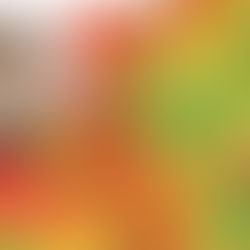Sculpting and Painting Ideology: The Vitality of Soviet Art and Propaganda

Polish-Soviet Propaganda Poster, 1920.
The art world is commonly understood as a cultural institution standing alone – caged within frames or the walls of galleries. But how can we understand this after the last 150 years of inventive, albeit highly flawed, ideologies and their battlegrounds in our cities and our minds – a story which must inevitably have involved these timeless pieces of art. There has been a castration of the political power of modern artists and their work – highlighting the need for a better understanding that accounts for the power of both the mere propaganda posters on the wall to grand cathedral architecture. Orwell famously stated ‘all art is propaganda’ and it’s time we start to realise this.
At the beginning of the of twentieth century, one of the most significant ideological battles of modernity began: that of Soviet Communism and its opposition to Western liberal democracy. The October Revolution was the beginning of this story, but it didn’t just change the political landscape of Eastern Europe: It commenced a new era for artistic expression. The Russian Avant-Garde was already underway by this point, but the diversity of Russian abstract art was about to be stripped to pure Constructivism to meet Soviet ideological needs. And after Stalin’s rise to power, this principle of Soviet Realism – the idea that art must reflect the materialist ideas of the state – infected every single cultural institution.
That is not to say that Constructivism was integrally perverse; the work of El Lissitzky illustrates the ingenious behind this movement and the impact it has had on global society. ‘Beat the Whites with the Red Wedge’ is one of his most famous – an abstract geometric painting with an impression of a map, which really depicts the Red Bolsheviks’ victory over White Russian émigré (those who left following the Revolution). This ultimately functioned as a Bolshevik propaganda poster, but over time has carved a space in Western pop culture, most recently as the inspiration behind Franz Ferdinand’s single cover for ‘This fffire’.
The artistic prowess of Soviet propaganda extended outside the world of art to their actual tabloid propaganda pages. The Godless Magazine, a state-run newspaper, printed their sixth edition with a cover depicting a harrowing painting of the skull of the Pope named ‘The True Face of the Catholic Church’. In the image, you can see the impressive use of light and smoke to tell the story of the Catholic Church’s complicity to Nazi burning of books – and perhaps alludes to its oppression of the downtrodden throughout history in the background. This poster speaks of a fusion of art and politics which played an important part in the development of Bolshevism – but perhaps represents the pinnacle of this relationship in Europe’s modern era.
Russian artists weren’t simply muses for the state, however; in the elemental years of the Revolution, Constructivists had deeper goals for the transformation of Soviet society. They envisioned a new spiritual age for Russia which stands quite apart from Marxist atheist materialism – one which is portrayed in their work. This positions the Avant-Garde artists as important actors in the development of the Revolution: perhaps this functioned as a dialectic with the materialism of the state? What can be assured is that they held more power in the social developments of Russia than they’re given credit for.
Accounting for the role of the artist in the world of politics, and the influence of politics through art, is an important and understated dimension of our cultural institutions. Although the USSR collapsed in 1989, this phenomenon continues its importance into contemporary issues. The cartoonist Naji al-Ali has spent his whole life depicting the suffering of Palestinians through drawing; the character Handala is one he’s most famous for. A poor ten-year-old boy who has turned his back on ‘solutions’, this simple line drawing has been elevated to the level of a national symbol and an undeniable statement on the power art can have through politics. Art can no longer be understood as timeless relics sitting above the rush of contemporary life – from the beginning of the modern period, it has been an essential piece of the political puzzle.
Edited by Samuel Blackburn


































Comments